Gallery
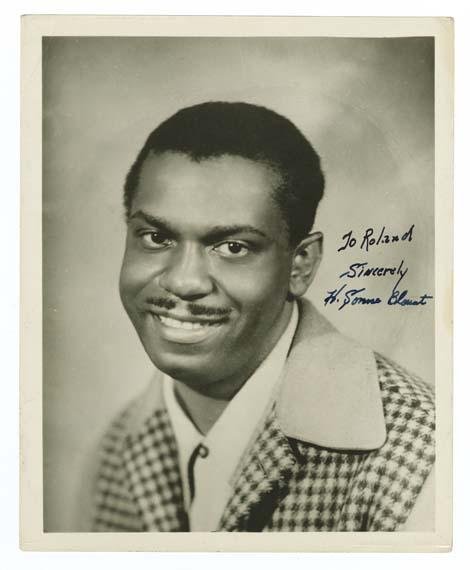
Undated
Sun Ra (1914-1993) was born in Birmingham, Alabama as Herman Poole “Sonny” Blount. Later in his life, he would claim, “I must have come from somewhere else. I wasn’t just born; I had been somewhere before I was born. I’m not a human.” Judging by his age and appearance in this photo, it may have been taken shortly after his move to Chicago in 1946. The “Roland” in the inscription is Roland Williams, a member of the Chicago doo-wop group The Nu Sounds, whom Sun Ra coached and recorded during the mid-1950s.
Listen to a clip of The New Sounds' "A Foggy Day (In London Town)".
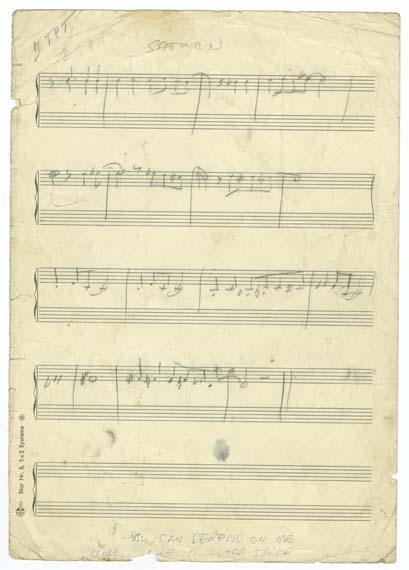
Sun Ra, partial manuscript score, undated.
As early as 1952, Sun Ra was calling himself a citizen of the planet Saturn, and recounted visiting the planet some years before. He explained that the inhabitants of Saturn had christened him the “Cosmic Communicator,” and sent him back to Earth to preach their message of unity and inclusion. “Saturn” first served as the Arkestra’s theme song, and is also among the earliest recorded material by the Arkestra. It was copyrighted on February 1, 1956 as part of an unrecorded suite entitled “Satana and Saturn.”
Listen to a clip of Sun Ra and His Arkestra's "Saturn".
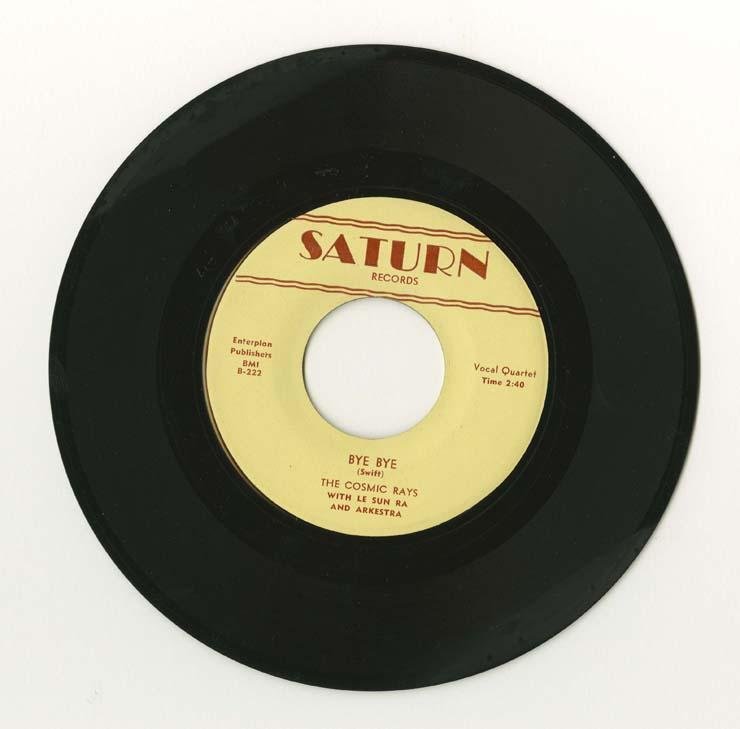
The Cosmic Rays, Saturn B222-23, 45 rpm, 1955[?].
In 1955, Sonny and his business partner and, later, manager, Alton Abraham formed Saturn Records. Considered to be one of the first musician-owned record labels, Saturn would go on to release the bulk of material in Sun Ra’s extensive (and rather tangled) discography. Among the first items released on the label was this 45 rpm single (also called a 45) by a Ra-backed vocal group.
Listen to a clip of The Cosmic Rays' "Bye Bye".
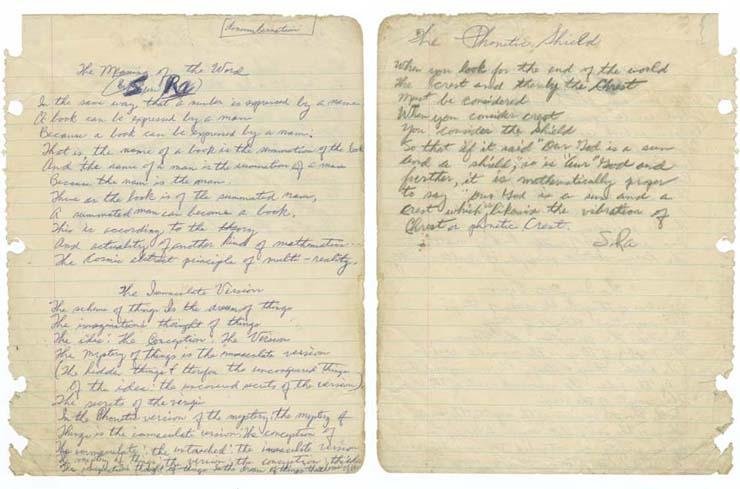
Sun Ra, undated.
Aside from his prodigious musical output, Sun Ra also wrote a large amount of poetry and prose, culminating with the Saturn publication of The Immeasurable Equation, a 1972 book of his poetry. None of the poems included in this manuscript appear to have seen publication.
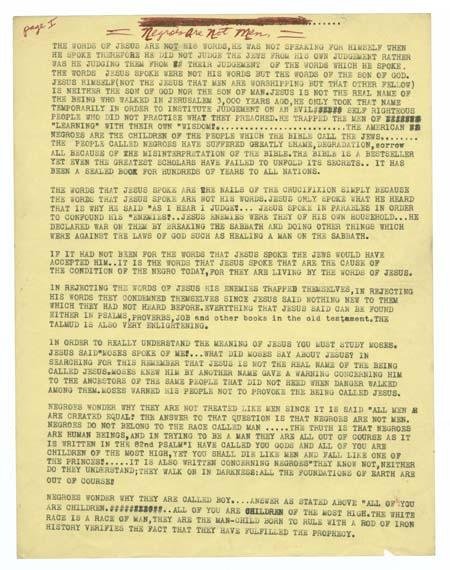
Sun Ra, broadside, undated.
Around 1951, shortly after meeting the then-fourteen year-old Alton Abraham, Sonny Blount began meeting with several other African-American men interested in science, astrology, the occult, Egyptology and the Bible (among other things). This group, which later became known as both Ihnfinity, Inc. and Thmei Research, was formed as an offshoot of the Black Nationalist movement. Broadsides such as this one detail some of the beliefs of this group, and were given out as street flyers by Blount and Abraham.
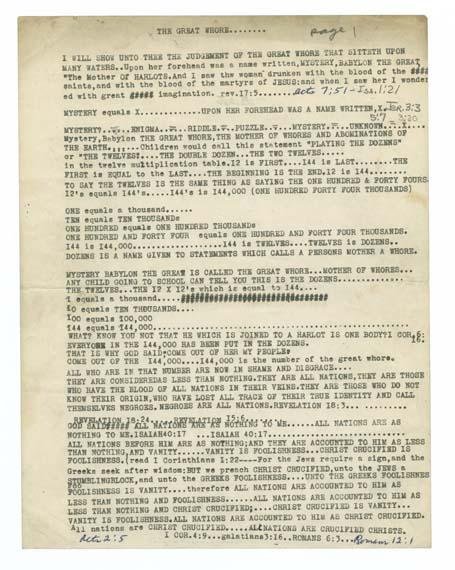
Sun Ra, broadside, undated.
Many of the broadsheets written by Sun Ra offer etymological and numerological explanations of biblical texts, allowing the reader to "decode" their true meanings, which Sun Ra believed were still hidden. Often, the etymological syllogisms he posits are bizarre in their claims, and the numerology is difficult to follow. John Corbett has suggested that these screeds are Sun Ra's attempt to cater to an audience already familiar with biblical scripture. Sun Ra could then potentially use that familiarity as a jumping-off point to explore some of his more esoteric beliefs.
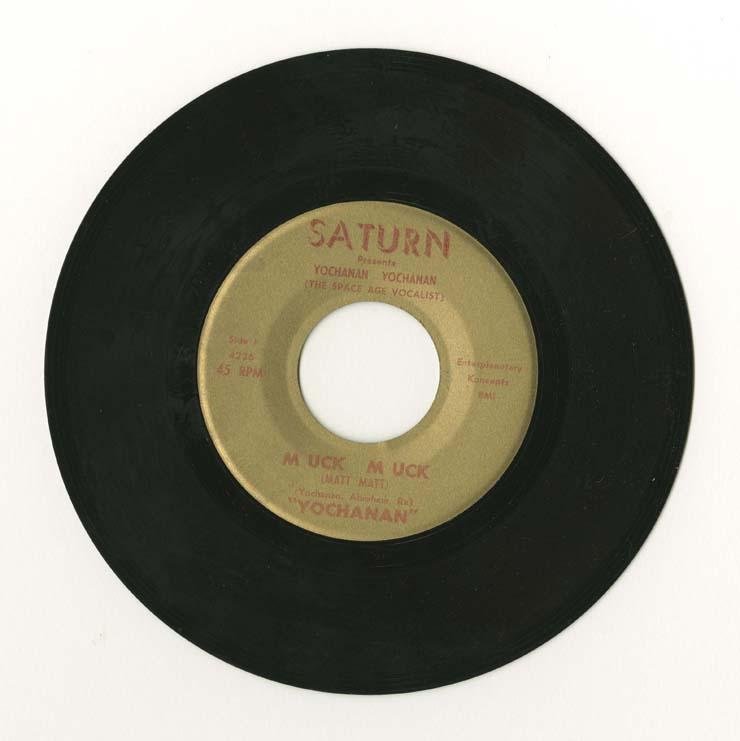
Yochanan, Saturn 4236-37, 45 rpm, 1957[?].
Apart from his own music with the Arkestra, Sun Ra spent time cultivating other Chicago acts during the middle-to-late 1950s. He recorded, wrote and produced songs with various pop vocal groups. While many of the acts were doo-wop groups, Yochanan was a local blues hollerer with a reputation for strange behavior and even stranger performances. “M uck M uck (Matt Matt)” was co-written with Sun Ra and Alton Abraham, and Yochanan continued to perform the song throughout his career.
Listen to a clip of Yochanan's "M uck M uck (Matt Matt)".
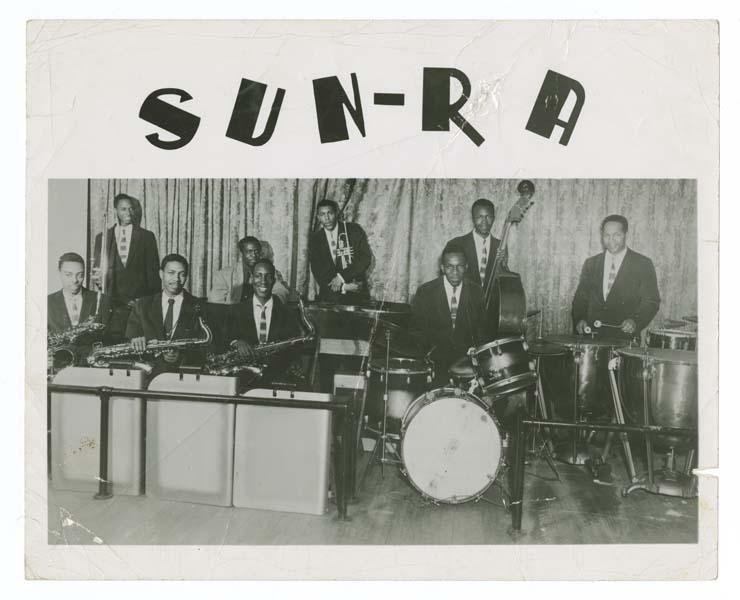
1955
This is a very early photo of the first incarnation of the Arkestra at Chicago’s Parkway Ballroom, who were being billed as Sun Ra’s 8 Rays of Jazz or the Modern Jazz Band during this time. From left to right: Pat Patrick, Julian Priester, John Thompson, Sun Ra, John Gilmore, Dave Young, Robert Barry, Richard Evans, Jim Herndon.
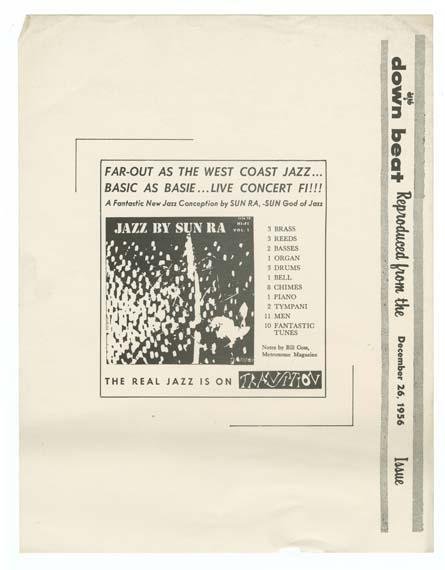
1956
In 1957, Transition Records released Sun Ra’s first album, entitled Jazz by Sun Ra, Vol. 1. Unfortunately, before volume two could be released, Transition folded and the recordings for that session lay generally unreleased for over ten years. Much of Sun Ra’s recorded output is subject to a multiplicity of problems: unreleased material; rereleased material under the same name or different names; missing or incorrect personnel information; and a general lack of dates on album jackets and on the records themselves. Well-researched discographies have been published, though it is still difficult to navigate Sun Ra’s oeuvre.
Listen to a clip of Sun Ra and His Arkestra's "Lullaby for Realville".
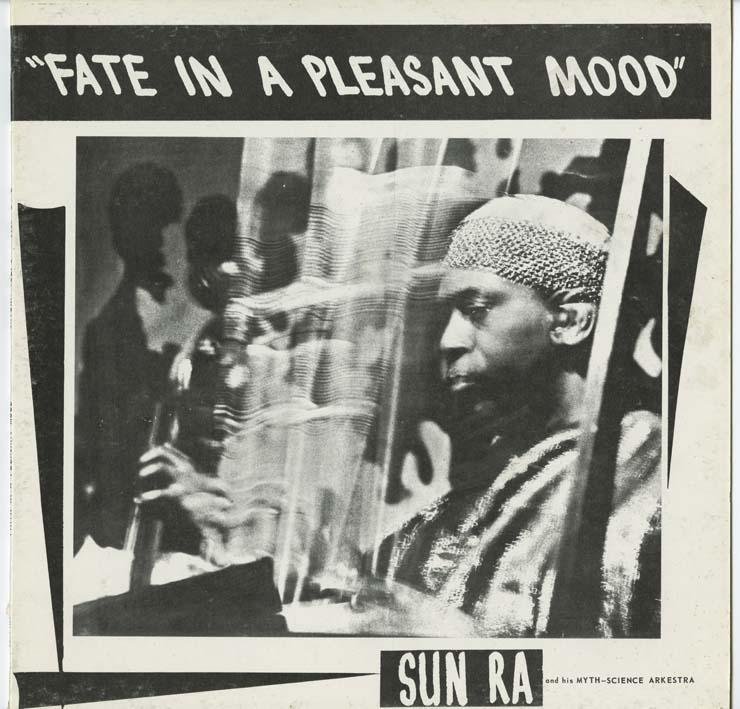
Sun Ra and His Myth Science Arkestra, Saturn SR9956-2-B, 33 1/3 rpm, 1965.
This LP, recorded shortly before Sun Ra and his band left Chicago for points east, exemplifies some of the problems with dating, and confirming personnel on, Arkestra LPs. Fate in a Pleasant Mood does not have a date printed on the jacket or LP itself; these songs are cobbled together from several recording sessions, and the personnel performing on the tracks vary. The album notes make no mention of either fact. Arkestra members Lucious Randolph and Ron Hardy can be heard on some of the album’s songs, though they are not listed on the jacket. In this particular case, the 1967 Impulse Records rerelease attempts to correct the original’s omissions and mistakes.
Listen to a clip of Sun Ra and his Arkestra's "Space Mates".
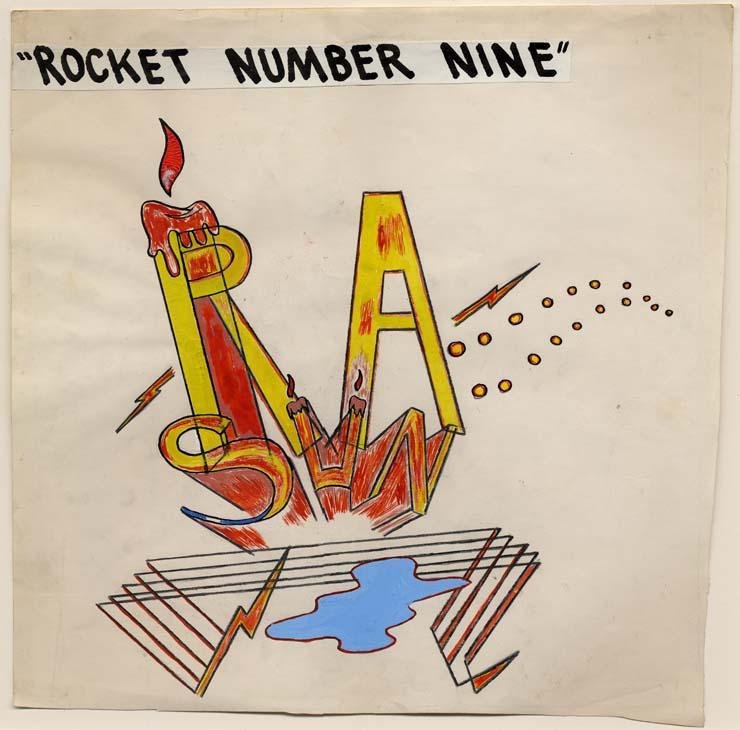
Claude Dangerfield, 1959.
Dangerfield, a Du Sable High classmate of Arkestra members John Gilmore and Pat Patrick, designed many of Sun Ra’s earlier album covers. While his artworks were used by Saturn through the late 1960s, most were designed in the late 1950s. Though the album was released around 1966, this cover was evidently never used, as no sleeves with this design have ever been found. Rocket Number Nine was retitled Interstellar Low Ways in 1969 and was given a new proto-psychedelic Dangerfield cover in red and white.
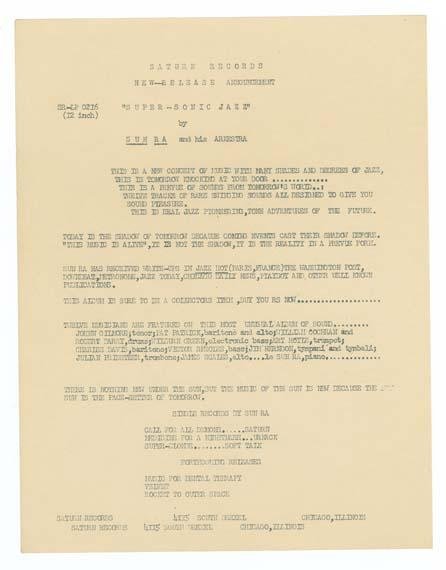
1957
Saturn Records’ first long-play record, Super-Sonic Jazz was released in early 1957. This pre-release statement, likely written by Sun Ra and Alton Abraham, gives an excellent snapshot of Saturn’s early catalog. The Arkestra’s three previous singles are listed near the bottom of the sheet, and directly below those are the label’s upcoming releases. Of the two that finally saw release (“Velvet” was never released as a single), the titles was changed slightly. Cosmic Tones for Mental Therapy came out roughly 10 years after this announcement, while Rocket Number Nine (later retitled Interstellar Low Ways) was released around 1966.
Listen to a clip of Sun Ra and His Arkestra's "Kingdom of Not".
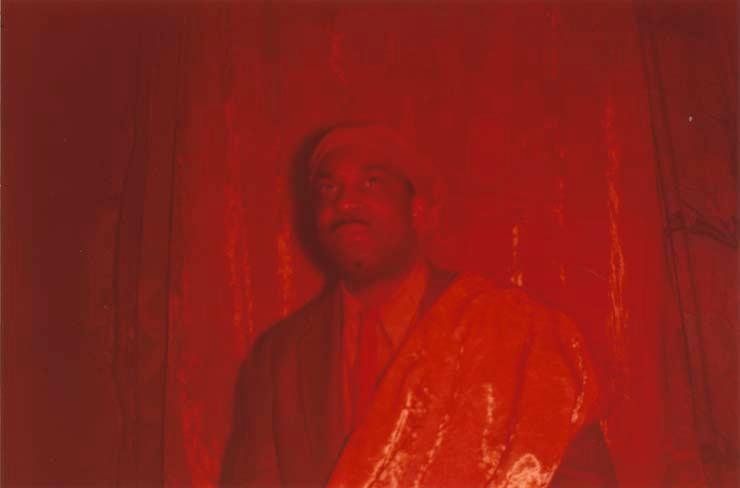
Undated
On October 20, 1952, Herman Blount legally changed his name to Le Sony’r Ra, a permutation of his nickname of Sonny and that of the Egyptian sun god. For business purposes, he would use the moniker Sun Ra. This legal change was the last in a long line of attempts to find his nominal identity. At different points in his life he called himself Baron Lee, Sonny Lee, Lee Son, H. Sonne Bhlount, Sonny Bhlount, Sonny Re and Le Sun Ra. While living in New York, he began giving his Arkestra members new names as well, calling them their “true names.”
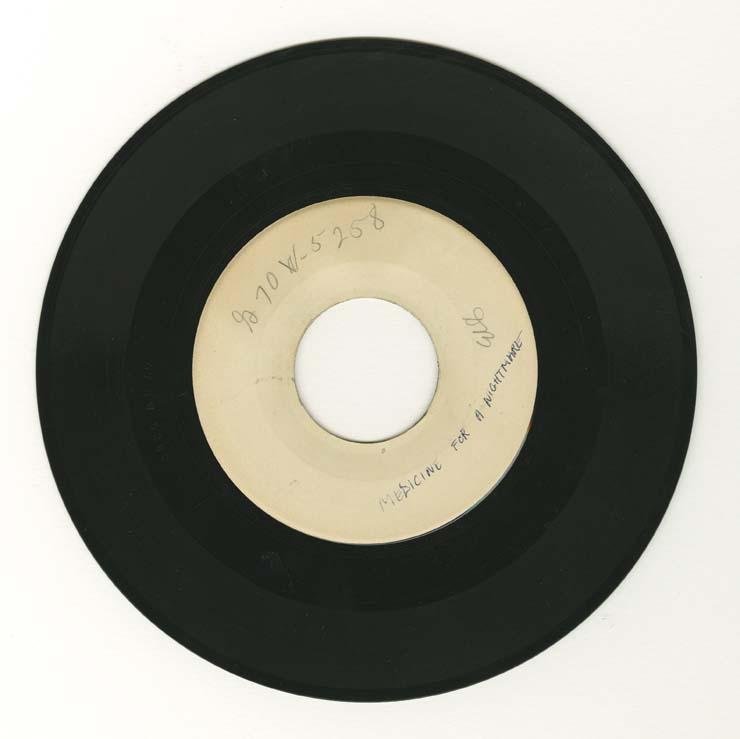
Sun Ra and His Arkestra, test pressing G70W-5258, 45 rpm, 1956.
This 45 represents one of the oldest Arkestra recordings ever found. It was first recorded at RCA Studios in Chicago in early 1956, in a session that produced the Arkestra’s first spurt of singles: “Saturn,” “Urnack,” “Call for All Demons,” “Snomed Yballul (Demon’s Lullaby)” and “Supersonic Jazz.”
Listen to a clip of Sun Ra and His Arkestra's "Medicine for a Nightmare".
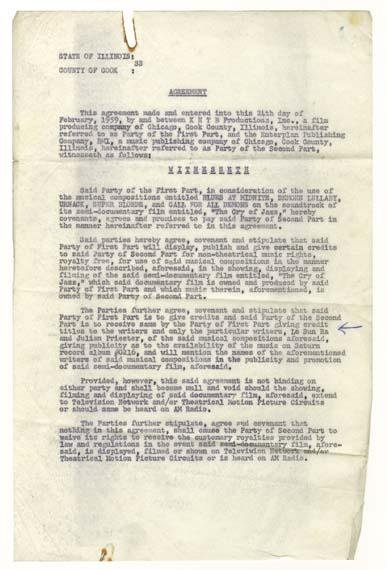
1959
In 1959, Chicago composer and filmmaker Edward Bland produced a landmark 34-minute film entitled The Cry of Jazz, in which Sun Ra and his Arkestra appeared. Bland, a graduate of Chicago’s American Conservatory of Music, was an early fan of Sun Ra’s. Aside from footage of the band playing at jazz clubs, the soundtrack also features three early Sun Ra songs. The third page of the document is an image waiver that contains the signatures of all band members who appear in the film. All were paid $1 for their appearances.
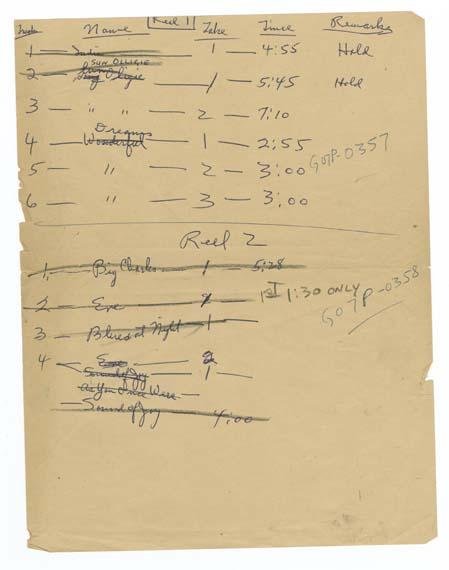
Super-Sonic Jazz [?], undated.
This handwritten list of songs, recorded during two separate sessions in the fall of 1956, may be a makeshift list used when Super-Sonic Jazz, the Arkestra’s first Saturn Records LP, was being edited for release. According to Ra scholar and collection donor John Corbett, this happened on Valentine’s Day, 1957. Making the document even more interesting are the two alpha-numeric codes on the right side of the document. These appear to be RCA studio matrix numbers, and may correspond to an unknown vinyl test pressing.
Listen to a clip of Sun Ran and His Arkestra's "India".
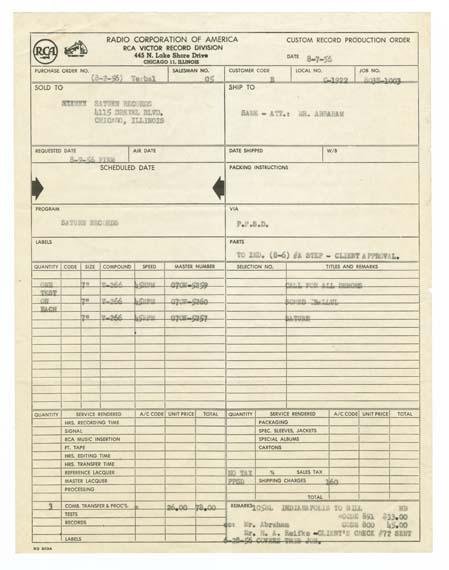
1956
Saturn relied heavily on RCA during its early years, using both the company’s Chicago recording studio and its record-pressing facility. This particular invoice is for three test pressings of individual songs, which was a common way to allow artists to hear the vinyl pressing before it was reproduced in larger quantities. This batch of test pressings would later be released on early Saturn singles and again on the 1965 LP Angels and Demons at Play.
Listen to a clip of Sun Ra and His Arkestra's "Call for All Demons".
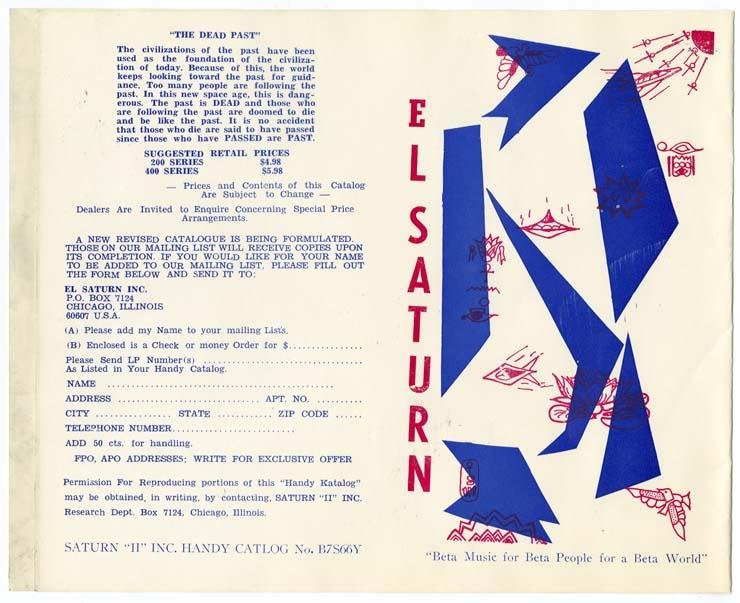
1967 [?]
While this catalog was produced well after Sun Ra and his bandmates moved from Chicago in 1961, it displays design elements typical of early Saturn Records materials. Because of poor distribution and almost non-existent radio play, it was difficult to find Arkestra materials aside from what was available at the live shows performed around Chicago. Mail-order catalogs like this were integral in showcasing new LPs and singles to mailing list subscribers and other fans.
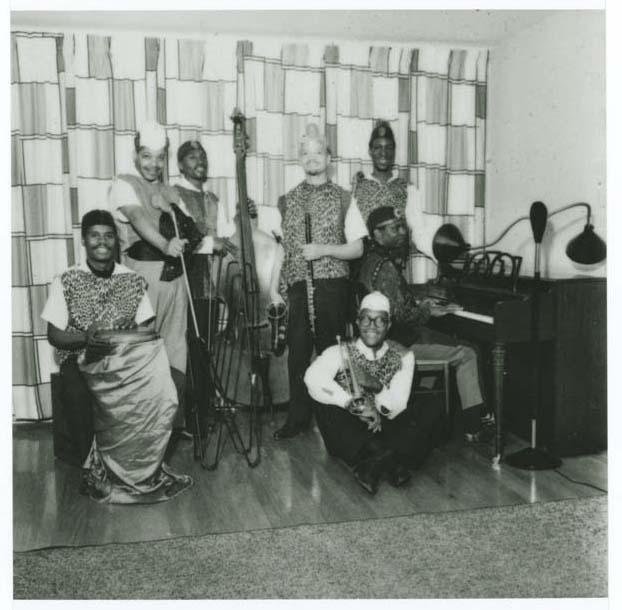
c.1960. Photo by Charles Shabacon.
Before moving from Chicago to New York in 1961, Sun Ra and his bandmates became known for their onstage costumes. Now seen as an integral part of the Arkestra’s legacy, Sun Ra originally viewed the costuming as a way to stand apart from other groups in town, and he gravitated toward African-inspired animal prints, Egyptian imagery and metallic lam. It was later, while living in New York, that he began wearing his flowing, iridescent stage garb offstage.
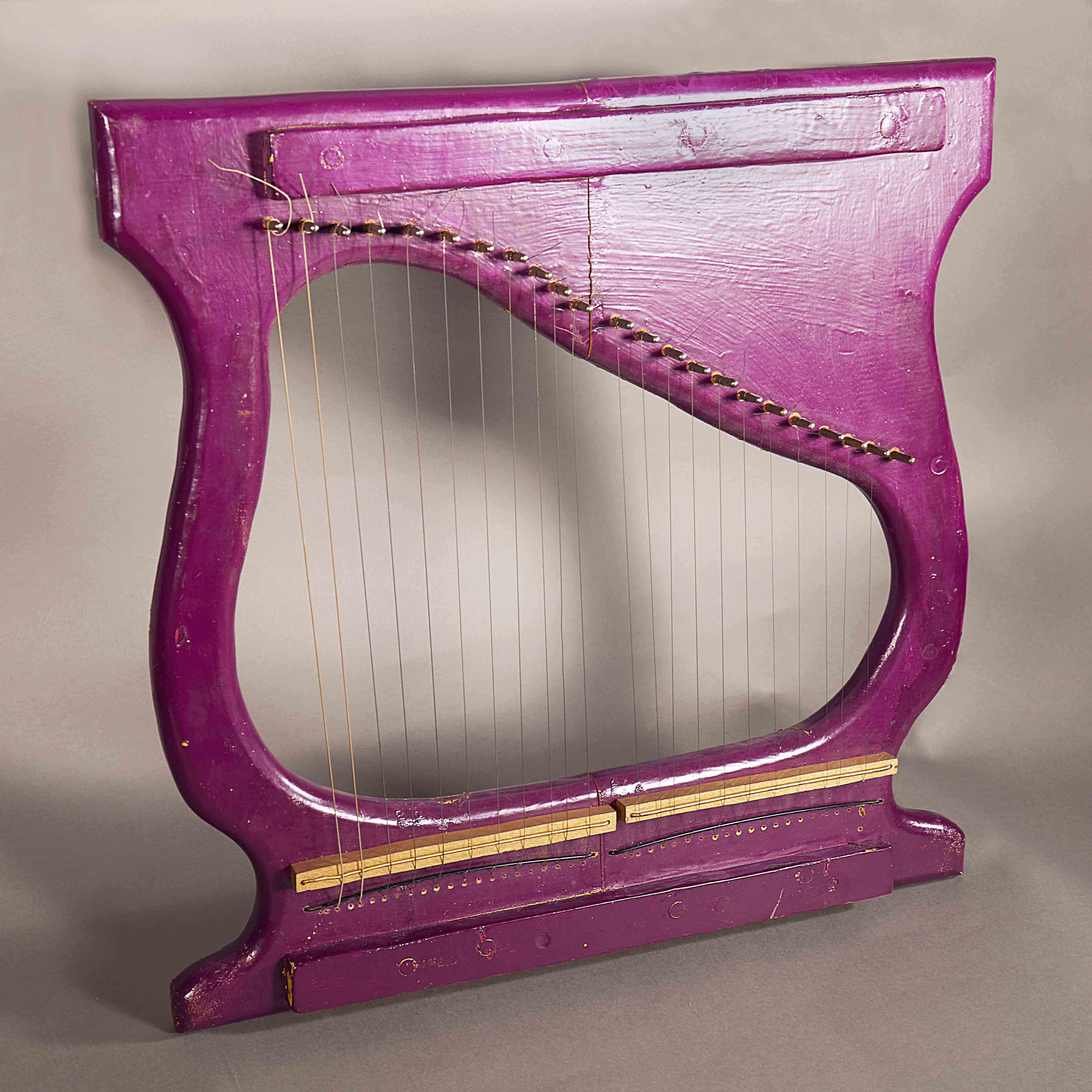
Sun Ra, wood, metal and wire, undated.
Throughout his career, Sun Ra had a habit of utilizing found or self-made instruments to get a particular sound he was searching for in his music. A few examples are the Ancient Egyptian Infinity Drum, space gong, Egyptian sun bells, solar drums, Chinese solar gong, spiral percussion gong, cosmic tone organ, flying saucer, sun harp, and space harp. This is believed to be one of several space harps used by the Arkestra.
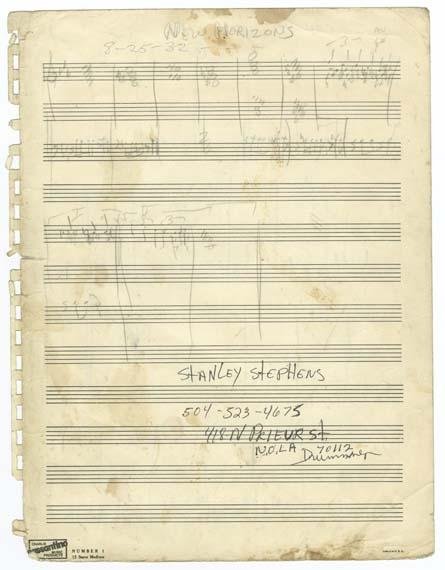
Sun Ra, partial manuscript score, undated.
A rough sketch of an early piece that was copyrighted and recorded in 1956, “New Horizons” was first issued on 1957’s Jazz by Sun Ra. The song is somewhat typical for Sun Ra during this period—rooted deeply in big-band swing and early bop, but with a progressive quality not heard in either. Sun Ra’s early arrangements make excellent use of Arkestra members like Julian Priester, John Gilmore and Laurdine “Pat” Patrick, whose improvisational skills set Sun Ra’s big band apart from many contemporaneous Chicago groups.
Listen to a clip of Sun Ra and His Arkestra's "New Horizons".
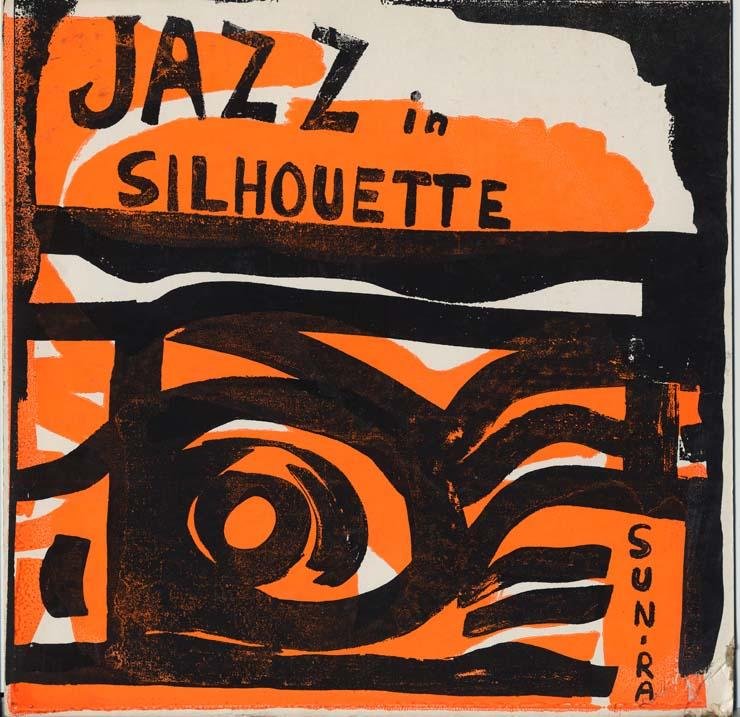
Sun Ra and His Arkestra, Saturn LP 5786, 33 1/3 rpm, 1959.
As early Arkestra records were pressed and re-pressed, album art would change, often going from plain white sleeves to professionally printed album covers. This is the earliest-known cover of Jazz in Silhouette, Sun Ra’s second full-length for Saturn Records. The print was designed by one H.P. Corbissero, whom John Corbett asserts is most likely Sun Ra himself, and the artwork is hand-printed directly on top of the plain white sleeve. Additionally, there are no album notes on the rear of the jacket.
Listen to a clip of Sun Ra and His Arkestra's "Enlightenment".
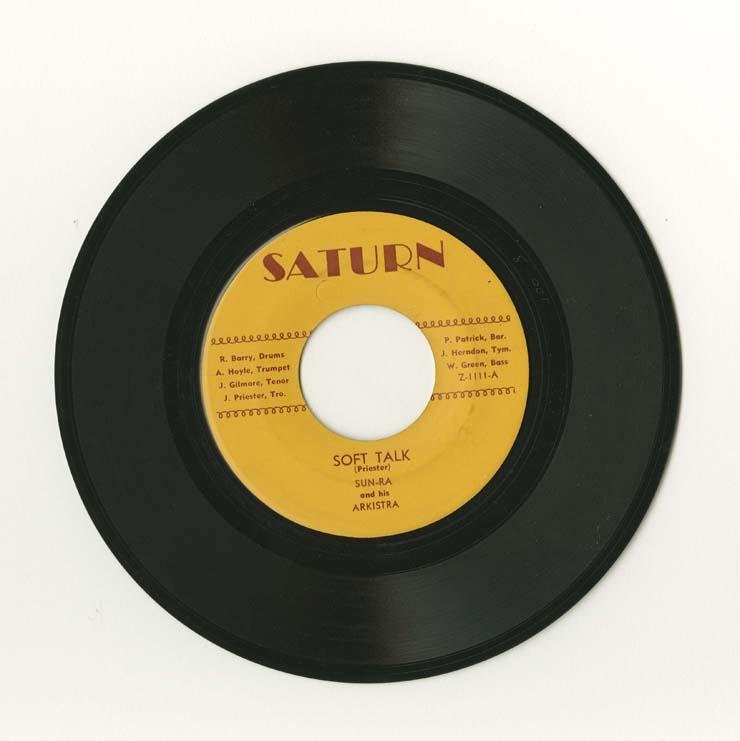
Sun-Ra and His Arkistra, Saturn Z-1111-A-B, 45 rpm, 1956.
This was one of the Arkestra’s first recordings. For the first few years of its existence, Saturn Records only released 45 rpm singles. “Soft Talk” was written by then-trombonist (and Du Sable High graduate) Julien Priester, who left the Arkestra in 1956 to join Lionel Hampton’s band. Priester has also performed with Duke Ellington, John Coltrane and Herbie Hancock, among many others. He is still an active musician.
Listen to a clip of Sun Ra and His Arkestra's "Soft Talk".
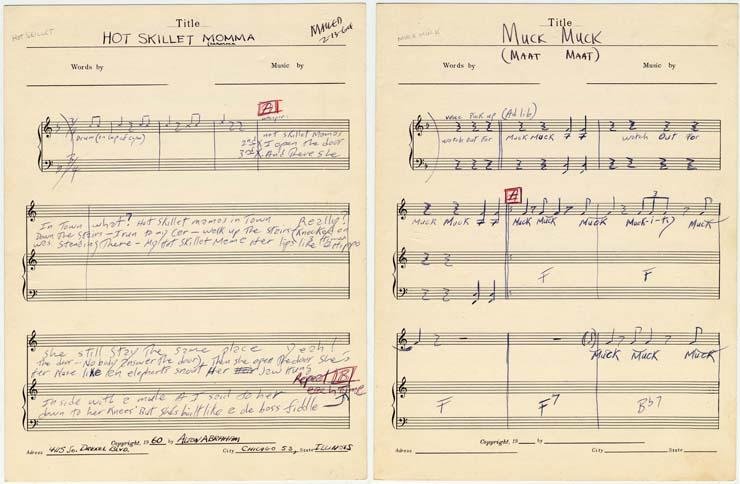
Alton Abraham, manuscript scores, 1960[?].
While the vocalist Yochanan performed and recorded these two songs, writing credits on the single are shared with Sun Ra and Alton Abraham. While Abraham, who at the time worked as an x-ray technician at Provident Hospital, managed Sun Ra and the Arkestra, he also wrote music for, and recorded, other Chicago artists. These two scores appear to be in Abraham’s handwriting, and “Hot Skillet Mama” was copyrighted by him in 1960 (though not mailed to the Library of Congress until four years later).
Listen to a clip of Yochanan's version of "Hot Skillet Mama".
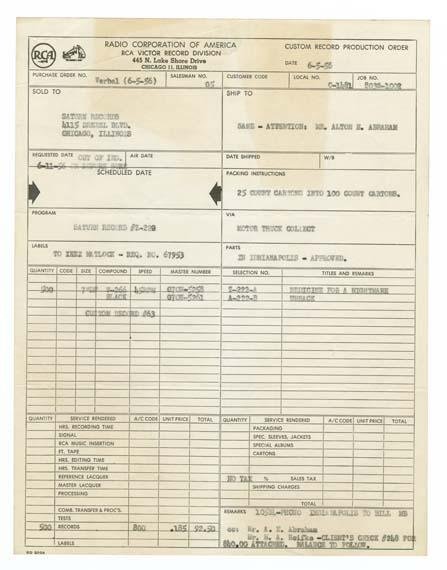
1956
This invoice details the initial 500-count pressing of Sun Ra’s first documented single, released on Saturn Records in the summer of 1956. This 45 bills the band as “Le Sun-Ra and his Arkistra.” In its earliest incarnation, the spelling of “Arkistra” was a phonetic respelling of Sun Ra’s pronunciation of “orchestra.” And aside from the obvious pun on the word “ark,” Sun Ra also found his named in both the first and last syllables of the word, making it doubly significant to a man very fond of word games. The more common spelling of “Arkestra” began appearing in 1957.
Listen to a clip of Sun Ra and His Arkestra's "Urnack".
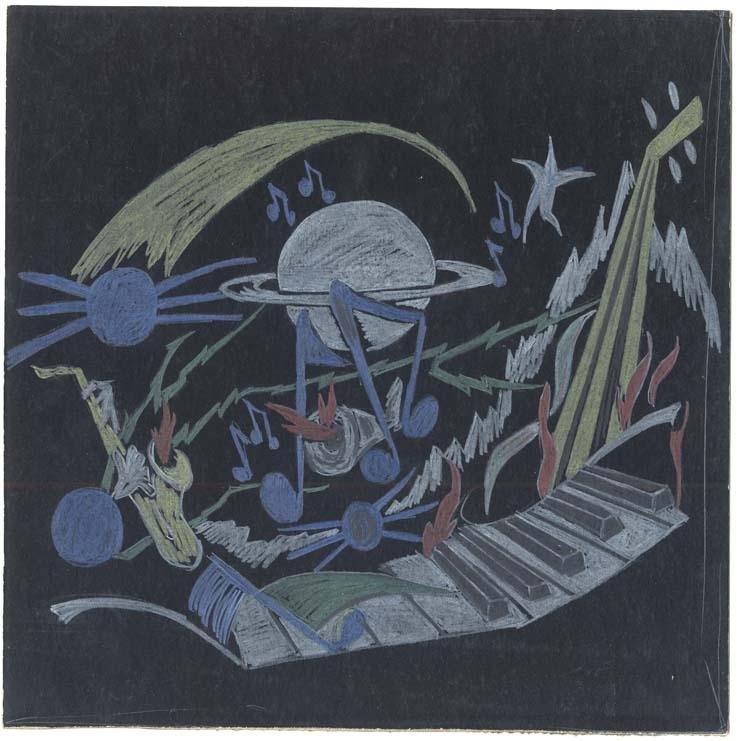
Claude Dangerfield, 1960 [?].
A Tonal View of Times Tomorrow was the name of an unreleased Arkestra LP, though in 1974 volumes two and three of the series were released under separate titles: Invisible Shield and Outer Spaceways, Incorporated. Robert Campbell suggests the title may have functioned as a working title for the LP eventually called The Lady with the Golden Stockings, later retitled Nubians of Plutonia (c.1967). Facets of this design also appear to have been integrated into an early 1960s cover for Sun Ra’s 1957 Super-Sonic Jazz LP.
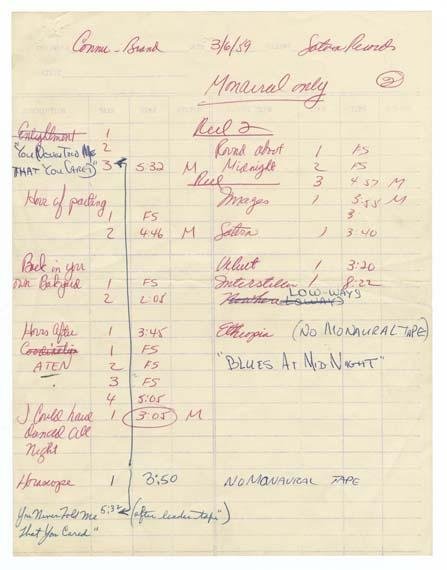
March 6, 1959
This log, filled out by the recordings engineer at an unknown Chicago studio, documents the session that recorded the entirety of Sun Ra’s second full-length album, Jazz in Silhouette, which was released later the same year. The session also includes material that would appear on the later Sun Ra albums Rocket Number Nine (c.1966) and Sun Sound Pleasure!! (1970). Two of the songs appear with different titles on the tape box of this session, with “Hours After” being renamed “Spontaneous Simplicity” and “Aten” appearing in 1965 as “Ankhnaton.”
Listen to a clip of Sun Ra and His Arkestra's "Ankhnaton".
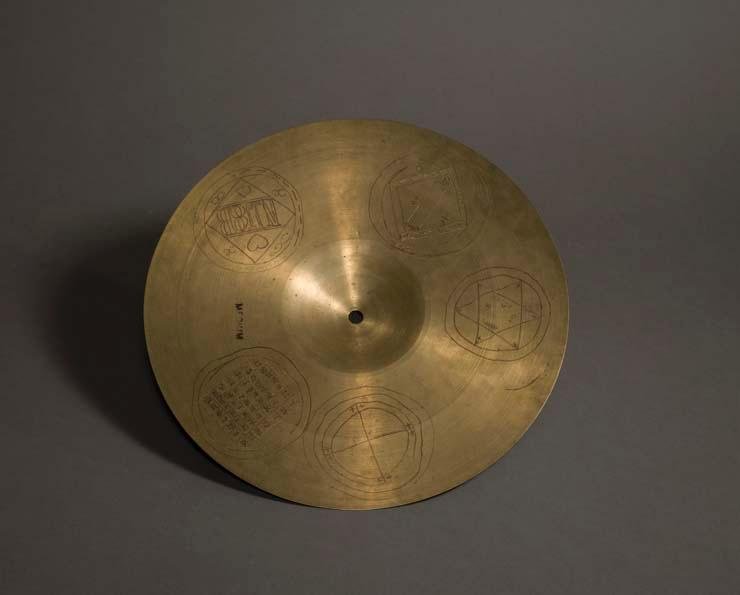
Undated
As well as costuming the members of his Arkestra, Sun Ra would also go to significant lengths to add visual flourishes to musical instruments as well. Aside from those he originally designed and made, Sun Ra would modify existing instruments. In the case of this cymbal, the modification has nothing to do with sonic properties.
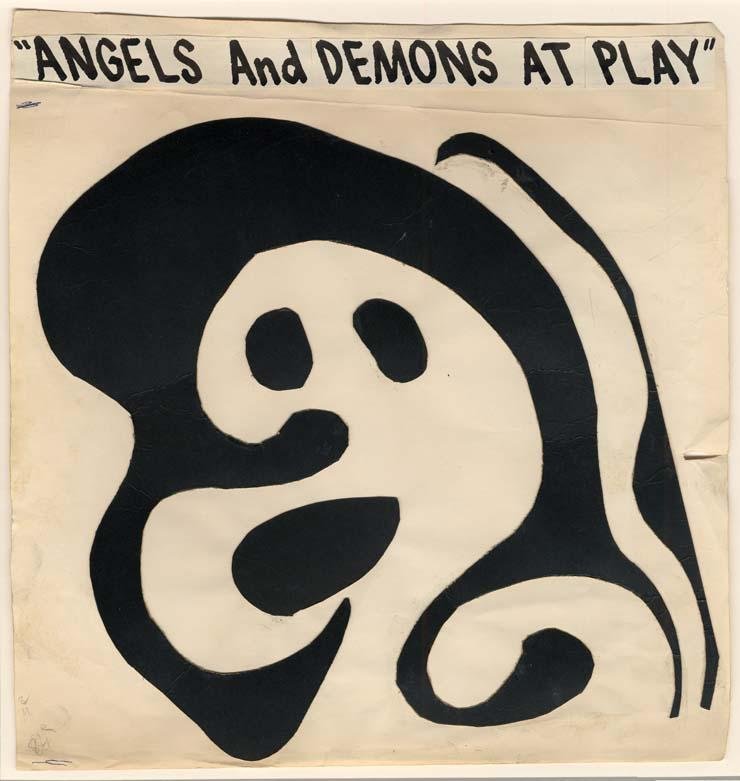
1965 [?]
Not released until 1965, four years after Sun Ra found himself on New York’s Lower East Side, the entirety of this album was recorded in Chicago in 1956 and 1960, and includes some of the Arkestra’s earliest material. While there is no name on this piece, John Corbett suggests the possibility that it, along with sister collages for When Sun Comes Out (1963) and When Angels Speak of Love (1966), was done by Sun Ra.
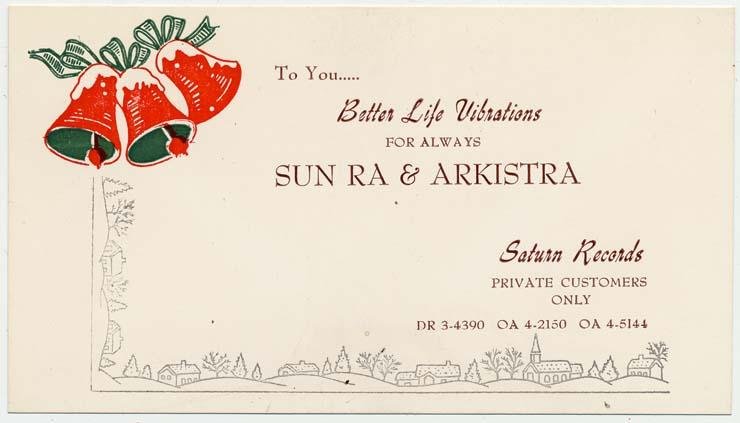
1956
Another early example of Saturn Records marketing, this holiday card may have been printed and mailed out in conjunction with the 1956 release of Happy New Year to You! / It's Christmastime, a Saturn Records single by Chicago doo-wop group The Qualities.
Listen to a clip of The Qualities' "It's Christmastime".
